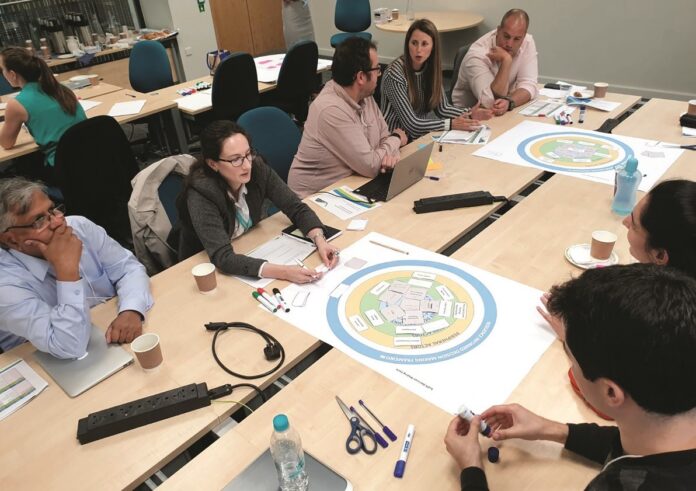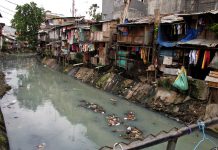A project supported by the UK’s Global Challenges Research Fund is working to progress the use of sustainable urban drainage systems (SuDS) to increase urban resilience in Brazil and India.
The RESoURce@Brandia project develops resilience-driven solutions through optimisation modelling. These bring together objectives of maximising flood and water quality resilience, minimising SuDS capital cost, and improving a previously designed Quality of Life Index by which the pillars of SuDS design are embraced.
In a first phase, resilience-driven SuDS solutions were developed for a case study in Brazil. In the second, ongoing phase, the model and the solutions developed in phase one are replicated for a case study in India, to test the scalability and transferability of the solutions.
The work is led by Dr Maryam Imani, at Anglia Ruskin University in the UK, and is being done in collaboration with teams of experts in Brazil, led by Dr Davi GF Cunha, at the University of São Paulo, and Prof BS Murty, at the Indian Institute of Technology, Madras, Chennai. It has involved two stakeholder workshops in Brazil and one in the UK, with a further workshop in India postponed because of the COVID-19 pandemic.
Study areas
The study area in Brazil is a 6.86km2 sub-catchment of the Mineirinho catchment, within the city of São Carlos in the southeast of the country. The main river is Mineirinho River, with two tributary streams, one flowing through mainly deprived and informal developments of Santa Fé, with a high level of water contamination, and the other flowing through newly developed areas and areas under development, including the University of São Paulo Campus II.
In a GIS-based feasibility investigation, and in consultation with local experts, green roof (GNR), rain barrel (RNB), permeable pavement (PVP), vegetation grass swale (GSW) and bio-retention tank (BIR) options were identified as potentially the most suitable SuDS strategies in the Mineirinho catchment. A range of technical and non-technical factors were considered to generate SuDS feasibility maps.
The study area for the second phase is the campus of the Indian Institute of Technology (IIT), Madras, in Chennai, with a total area of 2.5 km2. This campus includes residential, academic, commercial and public areas with seasonal flooding and water contamination issues.
Options and implementation
There has been growing interest in adoption and implementation of SuDS across the campus. The feasibility study sought similarities between the two case studies in order to design a suitable ‘adoption and scaling’ plan. The same SuDS solutions used in the case study in Brazil are considered to be suitable for this area as well. However, different solutions and trade-offs were obtained, given the type of SuDS chosen, decision-makers’ priorities, and the local conditions.
Pilot implementation of SuDS is being undertaken at both university campuses and this activity is being informed by the outcomes of the project. For training and educational purposes, the project has also developed a pilot resilience-driven game for incorporation of SuDS into urban planning.
According to the researchers, transition from traditional stormwater management to SuDS in the two countries still lacks a systematic approach. The most common challenges and barriers identified by different stakeholder groups throughout the project and in the participatory workshops were: lack of technical knowledge, skills and guidelines on SuDS; lack of/limited understanding of costs and benefits of SuDS; affordability; public education and awareness; disciplinary fragmentation; political barriers; and lack of unenforced policies.
The project provides lessons that could be used to develop an urban resilience roadmap by benchmarking SuDS. This roadmap can be used in case studies with similar challenges, especially in the context of climate change and growing population in developing countries.
The researchers see it as crucial that decision-makers identify and understand the social, environmental and economic priorities, with a long-term vision, before any urban resilience planning.
The project has also shown that the most resilient strategies come with a cost to build but this does not necessarily guarantee greater improvements in the societal aspects. This is an important lesson, implying that investing more, but not in a smart and systematic way, can lead to ineffective responses to societal needs.
Information provided by
Dr Maryam Imani, Senior Lecturer, School of Engineering and the Built Environment, Anglia Ruskin University, UK.
Dr Davi Gasparini Fernandes Cunha, Associate Professor, São Carlos School of Engineering, University of São Paulo, São Carlos, São Paulo, Brazil.








